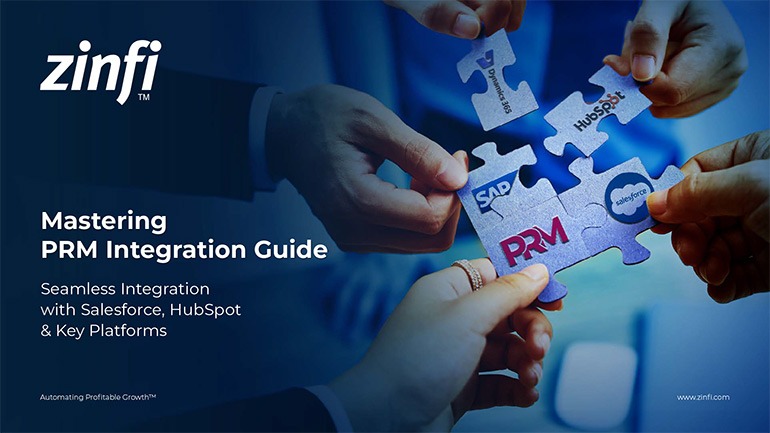Glossary - How to - Partner Marketing Program
How to Build a Partner Marketing Program?
Introduction
A partner marketing program is a strategic initiative where businesses collaborate with external partners—such as resellers, affiliates, or distributors—to promote their products or services. This type of marketing helps companies extend their reach, drive brand awareness, and increase revenue by leveraging partner networks and expertise.
In Partner Relationship Management (PRM), automating a partner marketing program ensures efficiency, scalability, and better resource allocation. PRM solutions facilitate smooth collaboration, track partner performance, and optimize marketing efforts. By integrating PRM automation, businesses can empower their partners with co-branded materials, lead-sharing capabilities, and campaign analytics.
Key Takeaways:
Define Clear Goals and Objectives:
To build an appropriate partner marketing program, start with well-defined goals. Identify what you want to achieve, such as increased sales, brand awareness, or customer acquisition.
- Align business objectives with partner incentives.
- Set measurable KPIs (e.g., revenue targets, lead generation, conversion rates).
- Communicate expectations with partners to ensure transparency.
Identify and Recruit the Right Partners:
Choosing the right partners is crucial for your marketing program’s success.
- Target complementary businesses that align with your brand values.
- Assess partner capabilities in terms of marketing reach and industry expertise.
- Develop an onboarding process to educate and equip partners with the necessary tools.
Provide Marketing and Sales Enablement Resources:
Empowering partners with the right resources improves engagement and campaign effectiveness.
- Create co-branded marketing materials (e.g., emails, landing pages, brochures).
- Offer training sessions on product knowledge and best marketing practices.
- Leverage PRM tools to automate content distribution and lead tracking.
Implement a Partner Incentive and Rewards System:
Motivating partners with incentives boosts participation and drives results.
- Offer commission structures that align with performance.
- Provide tiered reward programs based on sales and engagement levels.
- Recognize top-performing partners through awards and exclusive benefits.
Measure, Optimize, and Scale the Program:
Continuous evaluation and optimization ensure long-term success.
- Use PRM analytics to track partner performance and marketing ROI.
- Collect partner feedback for improvements.
- Scale by expanding to new partners and refining marketing strategies.
Summary of Key Takeaways:
Building a successful partner marketing program involves:
- Setting clear goals and KPIs to align business and partner objectives.
- Selecting the right partners based on industry relevance and capabilities.
- Providing marketing enablement resources such as co-branded content and training.
- Implementing incentive structures to drive engagement and sales.
- Continuously measuring and optimizing the program using PRM tools.
By following these steps, businesses can develop a structured and scalable approach to partner marketing, leading to increased brand reach and revenue growth.
Industry-Specific Applications of Partner Marketing Programs:
- Automotive Manufacturing:
- Partnering with car dealerships to promote new vehicle launches.
- Co-branded advertising campaigns for auto accessories and parts.
- Consumer Electronics:
- Collaborating with influencers and tech bloggers for product reviews.
- Joint marketing with retail partners to boost holiday sales.
- Energy Production:
- Partnering with solar panel installers for eco-friendly promotions.
- Co-marketing initiatives with sustainable energy advocates.
- Financial Services:
- Banks partnering with fintech companies to offer co-branded financial products.
- Referral programs with accounting firms for small business loans.
- Food and Beverage:
- Franchise-based co-marketing campaigns for restaurant chains.
- Partnering with influencers for food product promotions.
- Healthcare Services:
- Collaboration with insurance providers for health programs.
- Joint campaigns with medical suppliers for specialized equipment.
- Information Technology:
- IT firms co-marketing with SaaS providers to promote cloud solutions.
- Managed service providers collaborating on cybersecurity awareness.
- Pharmaceutical Development:
- Partnering with pharmacies for co-branded awareness campaigns.
- Research institutions co-marketing for drug trial participation.
- Retail Industry:
- Loyalty programs in collaboration with credit card companies.
- Joint online marketing campaigns between brands and e-commerce platforms.
- Telecommunications:
- Telecom providers partnering with streaming services for bundled promotions.
- Co-marketing with hardware manufacturers for smartphone sales.
Conclusion:
Building a partner marketing program involves strategic planning, partner selection, resource allocation, incentive creation, and continuous optimization. By leveraging PRM solutions, businesses can enhance collaboration, streamline processes, and maximize marketing impact. Implementing industry-specific strategies further ensures program effectiveness in driving revenue and brand growth. By implementing these strategies, businesses can create a scalable and effective partner marketing program that fosters growth and success in various industries.
Associated Keywords:
- Partner Marketing Strategies
- How To Create a Partner Marketing Plan
- Best Practices for Partner Marketing















